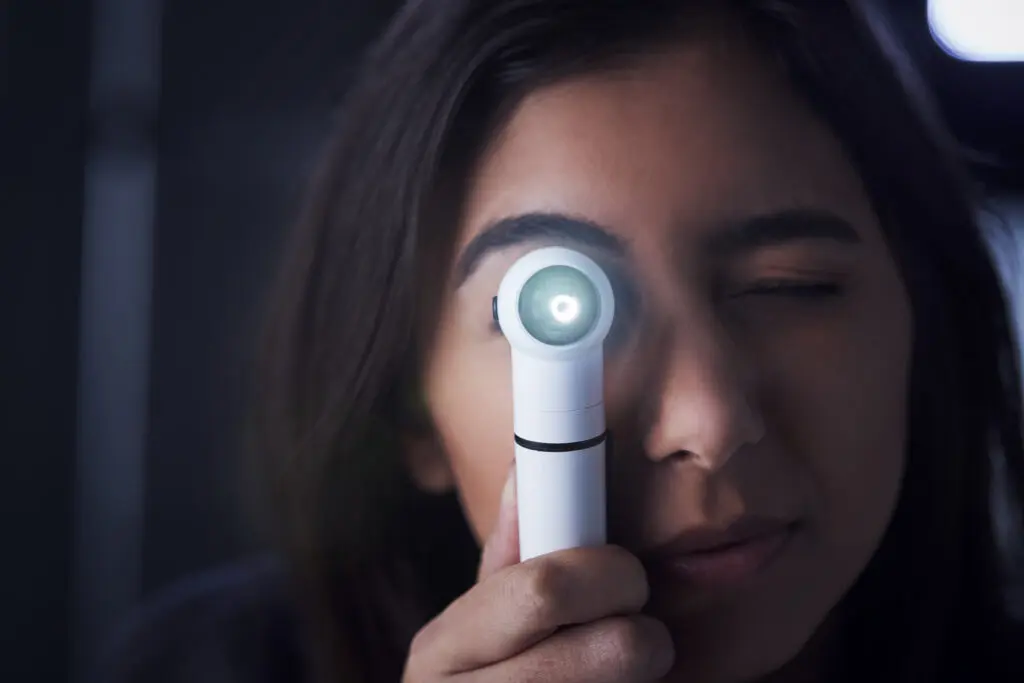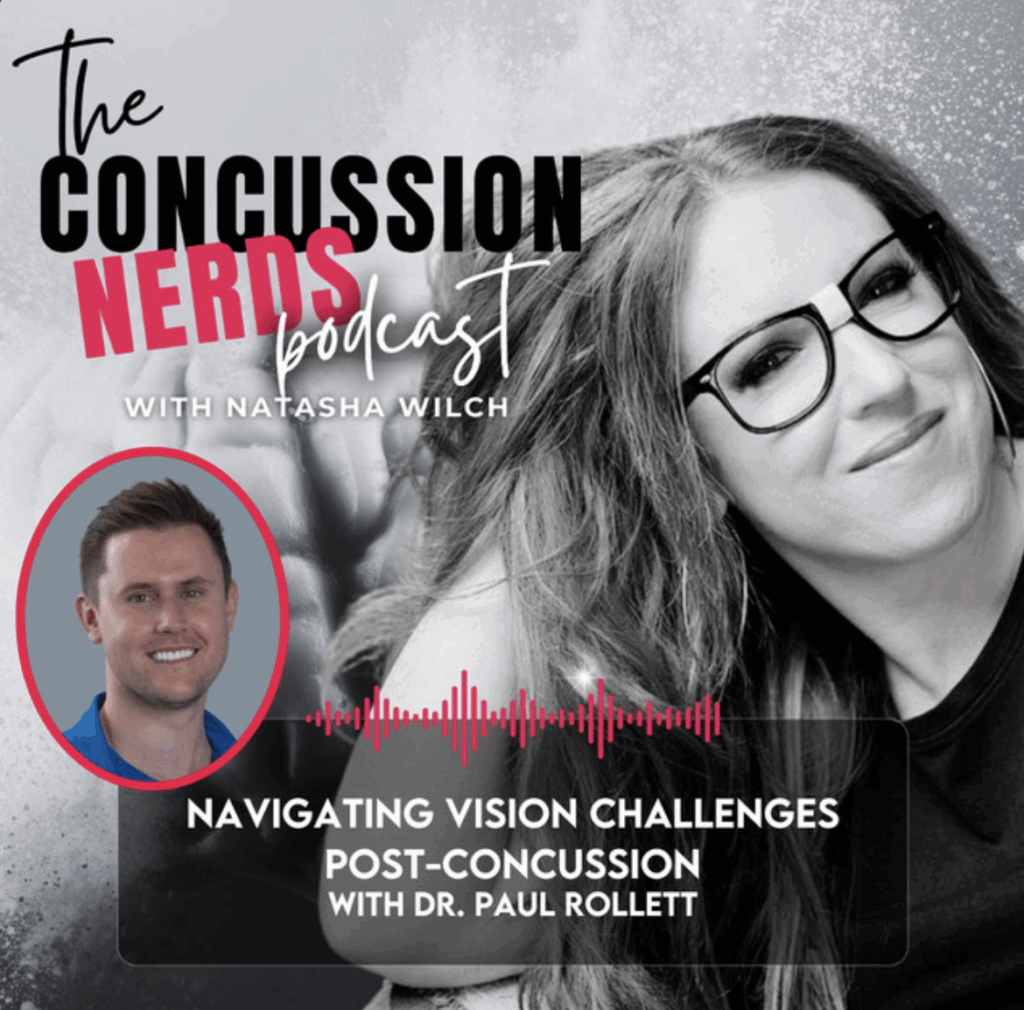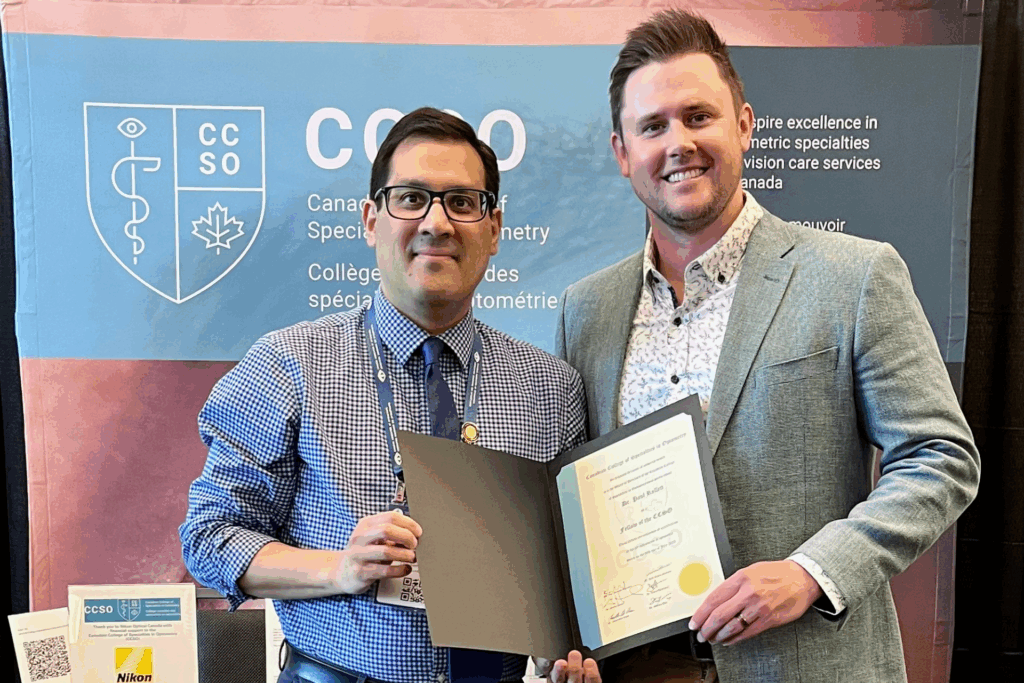
What Causes Double Vision and How Can It Be Treated?
Double vision – clinically known as diplopia – can make daily life challenging. Seeing two images of a single object can interfere with reading, driving, and even walking. Whether it’s caused by a minor eye muscle imbalance or a serious neurological issue, the good news is that double vision is often treatable.
In this guide, we explore the causes of double vision and provide a detailed overview of treatment options, including prism glasses, vision therapy, and eye muscle surgery.
What Is Double Vision?
Double vision occurs when your eyes are unable to work together properly. Instead of producing a single, unified image, your brain receives two separate images – causing overlapping or side-by-side vision. The condition can be either:
- Monocular Diplopia: Present in only one eye, even when the other is closed. Causes include cataracts, corneal irregularities, or lens problems.
- Binocular Diplopia: Occurs only when both eyes are open and disappears when one eye is closed. This is typically related to misalignment of the eyes.
Common Causes of Double Vision (Diplopia)
Double vision can result from many underlying conditions. Some of the most common include:
- Strabismus (misaligned eyes)
- Cranial nerve palsies (e.g., sixth nerve palsy)
- Convergence insufficiency
- Thyroid eye disease
- Myasthenia gravis
- Concussion or traumatic brain injury
- Stroke or neurological disease
- Decompensated phorias (latent eye misalignment that becomes symptomatic)
Because diplopia can signal serious health issues, it’s important to seek a comprehensive functional vision evaluation from an optometrist trained in binocular vision.
Diagnosing Double Vision
A thorough diagnostic process helps pinpoint the type and cause of diplopia. During a functional vision assessment, your optometrist may evaluate:
- Eye alignment and movement
- Focusing ability (accommodation)
- Binocular coordination
- Sensory fusion (ability to merge images)
- Postural and vestibular function (if dizziness is also present)
Once the root cause is identified, your eye care team can develop a personalized treatment plan.

Treatment Options for Double Vision
Treatment for double vision depends on the severity, underlying cause, and whether the condition is stable or evolving. Three highly effective approaches include:
1. Prism Glasses for Double Vision
Prism glasses are a non-invasive and often immediate solution for managing double vision, especially in cases of small, stable misalignments.
How Prism Glasses Work:
Prism lenses bend light before it reaches the eye, helping align images onto corresponding retinal areas. This allows the brain to merge the images into one.
Types of Prisms:
- Fresnel prisms: Thin, flexible prisms that stick to existing lenses; ideal for temporary or adjustable corrections.
- Ground-in prisms: Built directly into the lens; used for long-term, stable diplopia.
- Yoked prisms: Shift the entire visual field; often used in neurological or vestibular cases.
Benefits:
- Immediate relief from double vision
- Customizable and adjustable
- Non-surgical and easy to trial
Limitations:
Prism glasses do not correct the underlying dysfunction. They are typically used as part of a broader management strategy or while waiting for natural recovery in nerve-related cases.
2. Vision Therapy for Double Vision
Vision therapy is a structured, therapeutic approach designed to improve eye coordination, tracking, and binocular function. It targets the root causes of diplopia by retraining the brain and eyes to work together effectively.
Conditions Treated with Vision Therapy:
- Convergence insufficiency
- Intermittent or decompensated strabismus
- Visual-vestibular mismatch (often post-concussion)
- Oculomotor dysfunctions
What Vision Therapy Includes:
- In-office sessions guided by a trained vision therapist
- At-home exercises using tools like Brock strings, vectograms, and computer-based programs
- Progressive and personalized treatment plans
Vision Therapy for Double Vision
Patients seeking “non-surgical treatment for double vision” or “double vision after concussion” are often excellent candidates for vision therapy. This treatment builds long-term stability, reduces symptoms, and improves quality of life without the risks of surgery.
3. Eye Muscle Surgery for Double Vision
In cases of large or longstanding eye misalignments that don’t respond to glasses or therapy, strabismus surgery may be considered.
When Surgery Is Recommended:
- Severe or stable eye misalignment
- Long-term strabismus that affects vision or appearance
- Diplopia that doesn’t improve with other treatments
What Surgery Involves:
Surgery repositions the extraocular muscles to align the eyes properly. Adjustable sutures may be used to fine-tune alignment after the procedure.
Important Considerations:
- Surgery is often a last resort
- Post-surgical vision therapy may be needed to maintain results
- Risks include undercorrection, overcorrection, or recurrence
Surgery should always be coordinated with an optometric evaluation and prism trial, where appropriate.

Holistic and Collaborative Care
Double vision is often complex and requires a team-based approach. At Okanagan Vision Therapy, we collaborate with:
- Neurologists and physiatrists
- Vestibular and occupational therapists
- Ophthalmologists and strabismus surgeons
By taking a functional and holistic approach, we ensure that each patient receives comprehensive care, from diagnosis to resolution.
Living with and Managing Double Vision
Living with double vision can impact every area of life – from work performance to driving safety and emotional well-being. Early diagnosis and the right management plan can significantly reduce symptoms and restore confidence in daily activities.
Whether your double vision is related to a concussion, strabismus, or neurological disorder, help is available.
Conclusion
Double vision doesn’t have to be permanent. With proper diagnosis and a tailored treatment plan – including prism glasses, vision therapy, or surgery – most patients experience significant improvement or full resolution of symptoms.
If you or a loved one is experiencing double vision, the first step is a comprehensive evaluation with a provider who specializes in binocular vision and neuro-optometry.
Until next month,
Dr. Paul Rollett, OD, FOVDR



